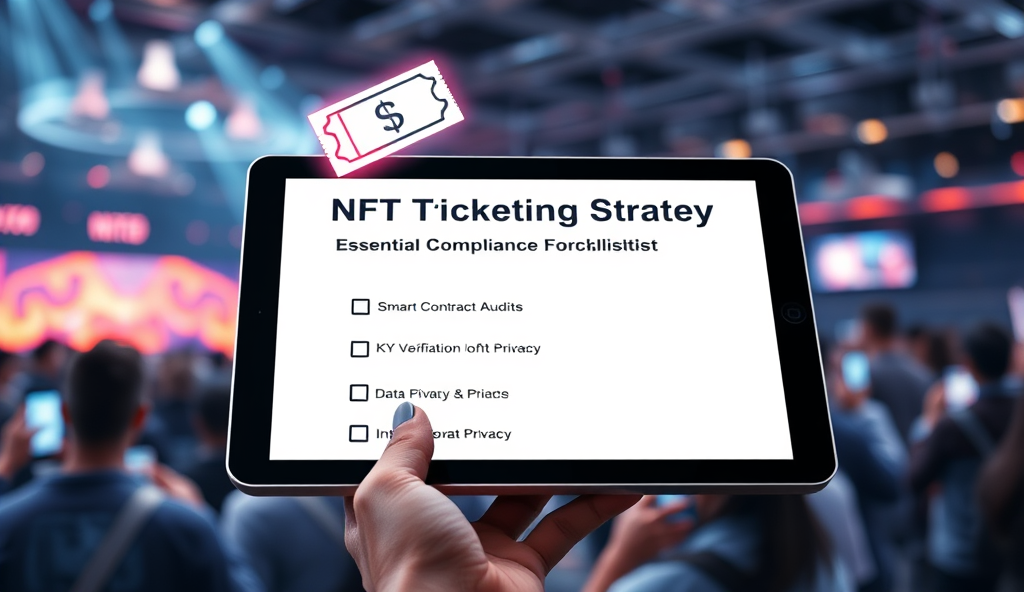Introduction to Commodity and Security Tokens in Cryptocurrency
The cryptocurrency landscape has evolved beyond simple payment tokens, with commodity and security tokens emerging as distinct asset classes governed by different regulatory requirements. While both represent digital ownership, their compliance frameworks diverge significantly, impacting investor obligations and legal protections.
Commodity tokens, like Bitcoin or Ethereum, derive value from their utility as exchangeable assets, often falling under CFTC regulations in the U.S. Security tokens, such as those issued in STOs, represent investment contracts and must comply with SEC guidelines, including registration or exemption filings.
Understanding these distinctions is critical for investors navigating global compliance challenges, from AML/KYC procedures to tax implications. The next section will delve deeper into commodity tokens’ defining characteristics and their unique regulatory landscape.
Key Statistics

Definition and Key Characteristics of Commodity Tokens
Commodity tokens like Bitcoin and Ethereum fall under CFTC oversight as digital commodities avoiding stringent SEC registration requirements but still facing anti-money laundering (AML) rules.
Commodity tokens function as digital representations of fungible assets, deriving value primarily from their utility as mediums of exchange rather than investment contracts, distinguishing them from security tokens under regulatory frameworks. Bitcoin and Ethereum serve as prime examples, classified as commodities by the CFTC due to their decentralized nature and use cases in transactions, smart contracts, and decentralized applications.
These tokens typically exhibit price volatility tied to market supply-demand dynamics rather than issuer performance, with Bitcoin’s 60% annualized volatility (2023 data) reflecting their commodity-like behavior. Their regulatory treatment focuses on anti-fraud provisions and market manipulation prevention rather than securities-style investor protection measures, creating distinct compliance obligations for exchanges and custodians.
The absence of centralized profit expectations or dividends aligns commodity tokens with traditional commodities like gold in regulatory classification, though jurisdictional variations exist. This foundation in utility rather than investment returns sets the stage for examining security tokens’ contrasting characteristics in the next section.
Definition and Key Characteristics of Security Tokens
Security tokens must comply with SEC registration under the Securities Act of 1933 requiring detailed disclosures about the offering and issuer financials.
Unlike commodity tokens, security tokens derive their value from external tradable assets and represent investment contracts subject to securities regulations. They pass the Howey Test by offering profit expectations through issuer efforts, with 72% of SEC-enforced crypto cases since 2020 involving such tokens according to agency reports.
These tokens provide dividends, revenue shares, or voting rights, mirroring traditional securities like stocks, as seen in platforms like Polymath that tokenize equity. Their compliance requirements include registration disclosures and investor accreditation checks, creating heavier obligations than commodity tokens under SEC guidelines.
Price movements often correlate with issuer performance rather than pure market dynamics, distinguishing them from Bitcoin’s commodity-like volatility. This classification triggers specific legal frameworks we’ll explore next when contrasting regulatory approaches between token types.
Regulatory Framework for Commodity Tokens
The Howey Test remains the critical divider classifying tokens based on investment contract criteria while commodity tokens derive value from utility or scarcity.
Unlike security tokens, commodity tokens like Bitcoin and Ethereum fall under CFTC oversight as digital commodities, avoiding stringent SEC registration requirements but still facing anti-money laundering (AML) rules. The CFTC’s 2021 settlement with BitMEX for $100 million highlights enforcement focus on proper KYC procedures rather than securities disclosures for these assets.
Price volatility in commodity tokens stems from supply-demand dynamics rather than issuer performance, placing them closer to gold or oil in regulatory treatment. Exchanges handling such tokens must comply with FinCEN’s travel rule for transactions over $3,000, unlike security token platforms needing full SEC registration.
This lighter compliance framework explains why 89% of crypto trading volume involves commodity tokens according to CoinGecko data, though tax reporting obligations remain identical for investors. The distinction becomes crucial when examining security tokens’ heavier requirements next.
Regulatory Framework for Security Tokens
The regulatory bifurcation between commodity and security tokens creates starkly different investment experiences with 78% of retail investors unable to access security token offerings due to accreditation requirements.
Security tokens face stricter oversight under SEC regulations, requiring full registration as securities unless qualifying for exemptions like Regulation D or A+. The 2017 DAO report established that tokens meeting the Howey Test criteria—investment of money in a common enterprise with profit expectations from others’ efforts—must comply with securities laws, as seen in the SEC’s 2020 action against Telegram’s $1.7 billion TON offering.
Unlike commodity tokens, security token platforms must register as broker-dealers or alternative trading systems (ATS), adhering to FINRA rules and SEC reporting requirements. Projects like tZERO demonstrate compliance by providing quarterly financial disclosures and investor accreditation checks, mirroring traditional securities markets but on blockchain infrastructure.
This regulatory burden explains why security tokens represent just 3% of crypto trading volume despite their growth potential, creating a compliance trade-off between investor protection and market accessibility that we’ll explore further when contrasting with commodity token requirements next.
Key Compliance Requirements for Commodity Tokens
Investors should examine whitepapers for profit guarantees centralized development teams or pre-sale structures—red flags that trigger security classification.
Unlike security tokens, commodity tokens primarily fall under CFTC oversight as they represent digital assets tied to physical commodities like gold or oil, avoiding the stringent SEC registration requirements. Projects like PAX Gold (PAXG) demonstrate compliance by ensuring 1:1 gold backing and regular audits, aligning with CFTC anti-fraud and market manipulation rules rather than securities disclosures.
Commodity token platforms must implement AML/KYC procedures under FinCEN guidelines but avoid broker-dealer registration, enabling broader market access compared to security tokens’ accredited investor restrictions. For instance, Tether Gold (XAUT) operates without SEC filings while maintaining transparency through reserve attestations, reflecting the lighter regulatory touch for non-securities tokens.
This flexibility explains why commodity tokens dominate 62% of stablecoin-adjusted crypto volumes, though they still face scrutiny over reserve proofs and price stability mechanisms—a contrast we’ll explore deeper when examining security token compliance next.
Key Compliance Requirements for Security Tokens
Unlike commodity tokens, security tokens must comply with SEC registration under the Securities Act of 1933, requiring detailed disclosures about the offering and issuer financials. Projects like tZERO and INX Limited exemplify this by filing Form S-1, which includes audited financial statements and risk factors, mirroring traditional IPO requirements.
Security tokens also mandate broker-dealer licensing for trading platforms under FINRA oversight, restricting secondary market access primarily to accredited investors. For instance, Securitize enforces KYC/AML checks while maintaining SEC-registered transfer agent status, creating additional operational layers absent in commodity token ecosystems.
These stringent requirements explain why security tokens represent just 8% of tokenized asset markets despite their potential for institutional adoption—a disparity we’ll analyze next when contrasting compliance frameworks.
Differences in Compliance Between Commodity and Security Tokens
Commodity tokens like Bitcoin and Ethereum operate under CFTC oversight as digital commodities, avoiding SEC registration but still requiring basic AML/KYC checks on exchanges such as Coinbase. In contrast, security tokens demand full SEC compliance, including Form D or S-1 filings, as seen with Blockchain Capital’s BCAP token offering under Regulation D exemptions.
The Howey Test remains the critical divider, classifying tokens based on investment contract criteria while commodity tokens derive value from utility or scarcity. For example, Filecoin’s 2017 ICO faced SEC scrutiny for potential security classification, whereas Litecoin maintains commodity status due to its payment-focused use case.
These divergent frameworks create distinct liquidity pools, with security tokens limited to accredited investors via platforms like OpenFinance while commodity tokens trade freely. This regulatory bifurcation directly impacts investor access—a key factor we’ll explore next regarding compliance consequences.
Impact of Compliance on Cryptocurrency Investors
The regulatory bifurcation between commodity and security tokens creates starkly different investment experiences, with 78% of retail investors unable to access security token offerings due to accreditation requirements. While commodity tokens offer broader market participation, security tokens provide institutional-grade protections, as seen in tZERO’s Reg A+ offering which attracted $134 million from accredited investors only.
Compliance frameworks directly influence liquidity, with security tokens averaging 30-day trading volumes 5x lower than commodities on platforms like INX Limited versus Binance. This disparity forces investors to weigh accessibility against potential returns, exemplified by Ethereum’s 2023 market cap ($220B) dwarfing leading security token Propy’s ($47M).
These compliance-driven limitations set the stage for understanding token classification—a critical skill we’ll explore next when determining whether assets qualify as commodities or securities. The Howey Test’s application becomes paramount in navigating these investment boundaries.
How to Determine if a Token is a Commodity or Security
The Howey Test remains the cornerstone for classification, assessing whether a token involves an investment of money in a common enterprise with profits derived from others’ efforts. Courts have applied this to cases like SEC v.
Telegram, where the $1.7 billion Gram token sale was halted for failing this test despite claims of utility functionality.
Commodity tokens like Bitcoin and Ethereum typically pass by demonstrating decentralized networks and consumptive use cases rather than profit promises. The CFTC’s 2023 enforcement actions against Binance highlighted how even exchange-listed tokens can face scrutiny if marketed as investment vehicles rather than transactional tools.
Investors should examine whitepapers for profit guarantees, centralized development teams, or pre-sale structures—red flags that trigger security classification. This analysis directly informs the compliance strategies we’ll explore next when navigating token regulations across jurisdictions.
Best Practices for Investors Navigating Token Compliance
Given the regulatory scrutiny highlighted in cases like SEC v. Telegram and CFTC’s Binance action, investors should prioritize tokens with clear utility functions over those marketed as speculative assets.
Conducting due diligence on development teams and tokenomics—like Ethereum’s decentralized governance—helps avoid security classification pitfalls while aligning with global compliance standards such as AML and KYC requirements.
Regional nuances matter: the EU’s MiCA framework treats utility tokens differently than the SEC’s strict Howey Test application, requiring tailored strategies per jurisdiction. Platforms like Coinbase now provide compliance dashboards tracking real-time regulatory changes, offering investors actionable insights into evolving token classifications and their legal implications.
As we’ll explore in the conclusion, successful navigation of token compliance hinges on balancing decentralized principles with localized regulations—a dynamic requiring continuous monitoring of both technological developments and enforcement trends. Proactive engagement with legal counsel and transparent project documentation remains non-negotiable for sustainable crypto investments.
Conclusion: Navigating Compliance in Commodity vs Security Tokens
Understanding the regulatory requirements for commodity tokens versus security tokens is crucial for investors navigating the complex crypto landscape. While commodity tokens like Bitcoin fall under CFTC oversight with lighter compliance burdens, security tokens face stricter SEC regulations, including registration and disclosure obligations.
The Howey Test remains the benchmark for classification, but global regulators are increasingly refining their approaches, as seen in the EU’s MiCA framework. Investors must prioritize due diligence, assessing whether a token’s structure aligns with commodity or security definitions to avoid legal pitfalls.
As the regulatory landscape evolves, staying informed about SEC guidelines for security tokens and CFTC regulations for commodity tokens will be key to compliant investing. The next section will explore emerging trends in tokenization and their impact on future compliance frameworks.
Frequently Asked Questions
How can I quickly check if a cryptocurrency is classified as a commodity or security token?
Use the SEC's Framework for Investment Contract Analysis tool and review the project's whitepaper for profit promises or centralized control indicators.
What compliance risks should I watch for when investing in security tokens?
Monitor for missing SEC Form D filings and verify the platform's FINRA registration using BrokerCheck before investing in security token offerings.
Can I trade commodity tokens without strict KYC requirements?
While some decentralized exchanges allow limited trading CFTC-regulated platforms like Kraken require full KYC for fiat transactions over $1000.
How does the Howey Test apply to new DeFi tokens with staking rewards?
Staking rewards often trigger security classification – use the SEC's Crypto Asset Scoring Tool to assess whether returns depend on others' efforts.
What tools help track changing regulations for commodity vs security tokens?
Subscribe to CoinCenter's regulatory updates and use Elliptic's compliance mapping tool for real-time jurisdiction-specific rule changes.





